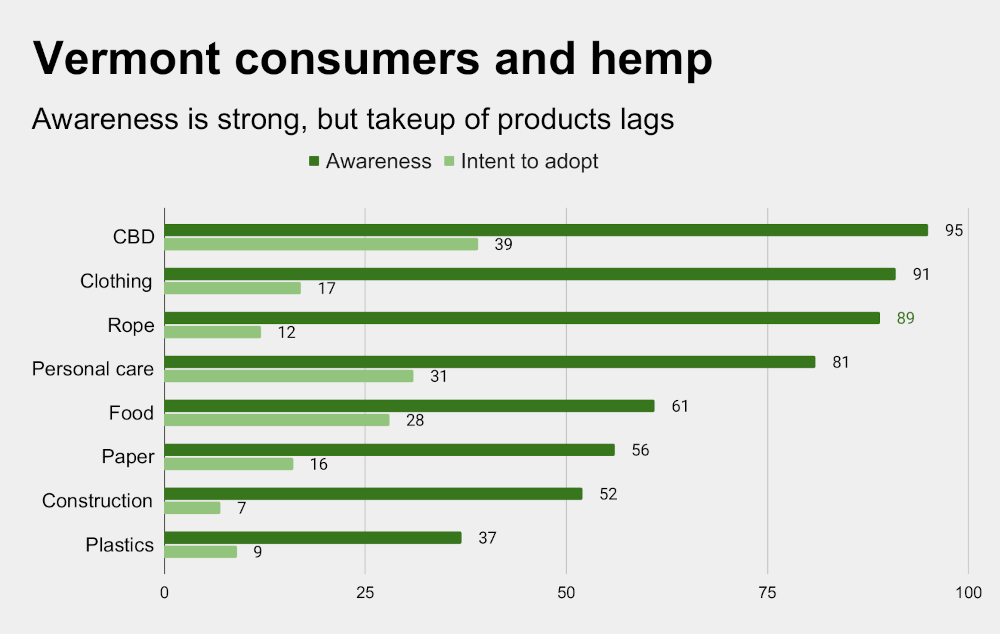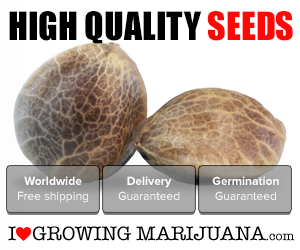Awareness of hemp is strong in some categories, but takeup of hemp products lags significantly, a study of Vermont consumers reveals.
CBD remains the most recognized downstream output made from industrial hemp, and awareness of certain other relevant consumer categories is also high, but the numbers of respondents who indicated they plan to use hemp products generally are low, according to the study, by a team of researchers from the University of Vermont.
“(Consumers) are most aware of and most frequently adopt hemp CBD, which reflects industry focus since hemp’s legalization and industry estimates,” the report shows. “However, consumers are nearly equally aware of hemp clothing, rope, and personal care products, and intend to use hemp personal care products at similar rates to CBD.”
‘Perceived advantages’
While CBD is more prevalent among an older demographic, younger consumers have a broader appreciation of hemp in its many forms, the study also suggests: “Older consumers may be more frequent users of CBD, but among our sample we find that younger consumers have a higher probability of using hemp overall. At the same time, hemp more broadly may be more appealing to younger populations, offering potential segmentation opportunities.”
“Results find that higher perceived relative advantage of hemp-based products leads to an increase in total products used,” according to the authors. “This indicates that the healthier, more palatable, and more durable hemp products are perceived to be, the more likely consumers are to use them, and use them with more intensity.”
In other findings, age differences and differences in support for marijuana were observed between users and non-users of hemp-based products, “which may identify hemp as being early in the diffusion process,” indicating room for growth in the hemp sectors.
More research needed
Authors of the study say their findings can help inform strategy for producers in the “nascent” hemp industry, where further market research is needed. “Findings point to targeted marketing opportunities for hemp stakeholders,” the paper observes.
Market analysis for hemp products should be expanded into a national model in the future, and should “consider modeling relative advantage characteristics as separate attributes to further distinguish the strength of values like health and taste on hemp adoption,” the study also suggests.
Read the full article here









